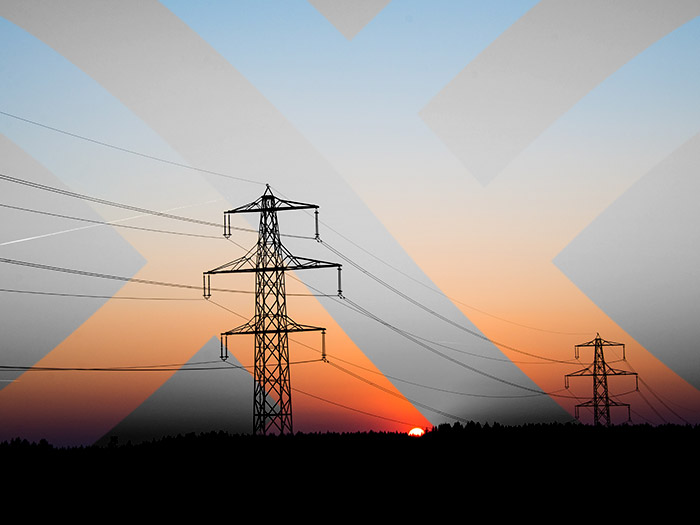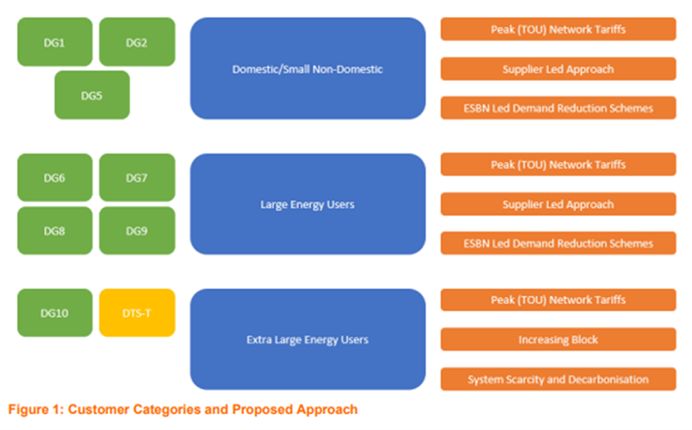Insights
better business decisions
Posted 3 years ago | 5 minute read

CRU unveils 2022-23 electricity network tariffs
To the address security of supply issues facing Ireland, the Commission for Regulation of Utilities (CRU) is seeking views on proposed structural changes to Electricity Network Tariffs to apply from 1 October 2022 to 30 September 2023.
Following security of supply concerns, in July, the government enacted the EirGrid, Electricity and Turf (Amendment) Act 2022. This Act allows EirGrid to acquire electricity generation plants that it sells to an electricity generation company. EirGrid will not operate the plant but rather enter into an agreement with the generation company to operate it. Funds to achieve this would come from government. The intent to procure temporary emergency generation was outlined in a CRU Information Note along with other measures including extending the operational life of some older units.
But in its consultation issued on 18 August, CRU has said these actions will require significant expenditure by the network companies in the coming years, reflected in the 2023 allowed transmission revenues. It states that it intends to apportion these costs to customers having the most significant impact on security of supply. It proposes to recover €100M of the total €478M system security related costs included in forthcoming tariffs via a suite of new tariff arrangements.
Under the plans, three out of the four new tariffs are to be levied on Extra Large Energy Users (XLEUs). The consultation sets out the four proposed new tariffs as follows:
- Increasing Block Tariffs to be imposed on XLEUs who significantly increase their demand relative to the previous twelve months. The CRU states that it “is envisaged that this will encourage some XLEUs not to ramp up their demand as rapidly or as significantly in the critical short-term period”
- a Decarbonisation Tariff to be imposed on XLEUs who consume electricity during periods of low wind (which is proposed to be deemed as periods when SNSP (level of non-synchronous electricity on the grid) is below 25%). The CRU indicates that SNSP in 2021 was less than 25% around a third of the time. The CRU states that it is anticipated that this will encourage large customers to “introduce and/or utilise additional flexible demand … and … focus their demand at times of higher renewable generation”
- a System Alert Response Tariff to be imposed on XLEUs who consume electricity during system alerts. The CRU states that it “is envisaged that this will encourage these large customers to introduce and/or increase flexible demand”; and
- a Peak or Time of Use Tariff to be imposed on all customers consuming electricity during the peak time of 17:00-19:00 each day.

The proposed tariffs range from €7.77MWh for the Decarbonisation Tariff to €215.40 for the System Alert Response Tariff (for transmission tariffs). The CRU is seeking views on whether these tariffs should be a temporary arrangement or incorporated into the enduring approach being considered through the Network Tariff Structure Review Project.
The CRU also encourages ESB Networks to accelerate the roll out of demand reduction schemes through its National Network, Local Connections Project, which would involve payments to customers who contribute to demand reduction on the distribution level. Suppliers will be requested to develop products to encourage customers to reduce demand and/or improve energy efficiency and report to the CRU quarterly on progress.
Responses are required by 1 September 2022.
GridBeyond Managing Director UK and Ireland Mark Davis said:
“Large energy users in sectors like manufacturing, logistics, data centres, digital technology, and pharmaceuticals will wish to model the impact of the proposals on their costs and the extent to which that impacts plans over the next year (assuming these are temporary measures).
“While potential for network cost rises is not good news for industries already being hit with rising wholesale energy costs, there are actions that businesses can take to reduce their exposure and provide an opportunity. Businesses that take stock of the way they produce and consume energy and create a future strategy that not only can reduce operating costs, but also generate revenues that can be further invested in new techniques and technologies that can support decarbonisation and sustainability.”
While security of supply is at the forefront of concerns and the need for businesses and industry to reduce their consumption is very important, some of the proposals in this consultation counteract the activities of Demand Side Response in the Irish electricity markets. These activities by DSR are already helping the system in times of system alerts and may be impacted by the proposals put forward by the Regulator and will need to be carefully considered in any decision.
EirGrid, the Irish TSO, have also stated in a letter to the CRU that significant numbers of large energy users cannot simply adjust their demand at different times highlighting the complexities of energy management.





